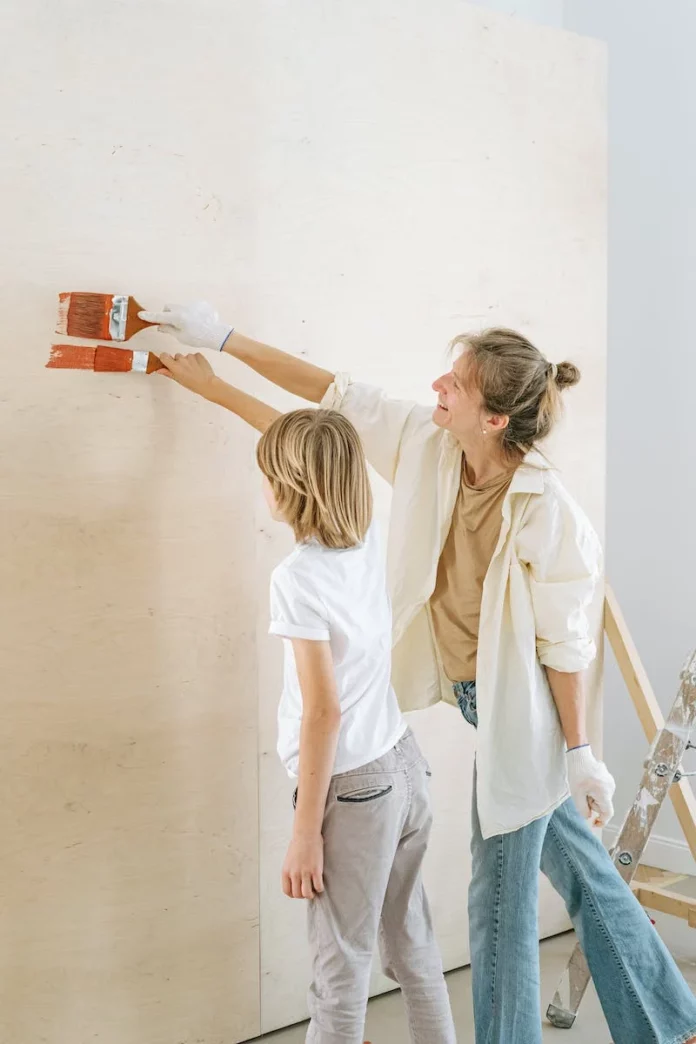Painting interior walls is a great way to give your home a fresh, new look. It’s also a relatively inexpensive project that can be completed over a weekend. When choosing paint colors, it’s important to consider the tone of the room.
Though painting walls is a fairly basic project, there are a few things to keep in mind when doing so. One of the most important aspects of a successful wall painting job is the use of a primer. Primer is a key ingredient in any painted surface. It coats the walls and helps to create a durable paint finish that will resist chipping and peeling. Primer also helps to ensure that the paint will adhere to the walls properly.
There are a number of reasons why you should use a primer before painting your walls. Here are just a few:
Primer Provides Barrier for the Paint
A primer is a liquid or powder that’s applied to the wall before you paint it. It’s designed to fill in any imperfections in the wall, such as cracks, joints, or holes. The primer is also used to fill in any gaps between the wall and the surface.
A primer will help the paint stick to the wall, making it easier for you to paint without having to repaint. The primer will also make the wall easier to paint because it will reduce the amount of sanding you need to do.
With Primer, The Top Coat Will Last Longer
Primer is a key ingredient in creating a long-lasting paint finish. It helps to fill in any imperfections in the wall, such as cracks, joints, or holes. The primer also helps to create a barrier between the wall and the paint, making it more difficult for the paint to chip or peel. Additionally, primer helps to ensure that the paint will adhere to the walls properly. As a result, walls that are primed before painting will require fewer touch-ups and will last longer before needing to be repainted.
Primer Will Give You a More Professional-Looking Finish
Primer can give your wall a more professional look, which is why it’s used by professionals and contractors. A good primer will give your walls a smooth surface and make them look like they’ve been sanded down. A good primer will also make your walls look like they were painted professionally, which is especially important if you’re going for a specific look.
Primer Covers Stains/Patterns So They Don’t Show Through The Top Coat
If you have stains or damage on your wall, you can use a primer to cover them up so that they won’t show through the top coat. This can be especially helpful if you have a dark color on your wall and you want the stain to blend in with the color of the top coat. You can also use the primer to cover up large areas of damage or stains so that they don’t show through when you apply your top coat.
Primer Helps The Transition Between Drastic Color Changes
If you change from one color to another in one area of your room, primer can help smooth out the transition between colors so that it looks better. For example, if you have a dark wall and then paint your room white, using a primer will make the transition between colors look more natural. The same thing applies if you have a light color at one end of your room and then a dark color at the other end. You can use primer for this transition as well so that it looks better.
Primer Will Keep The Glossiness Away From The Top Coat
If you apply the top coat directly over a primer, it will cause the top coat to be glossy. When you apply a top coat over a primer that’s already covered with paint, it’ll be less glossy because there’s no gloss on top of it. If your top coat has too much glossiness, it’ll make your paint look cheap and won’t look as nice as it would if it were less glossy. So if you want your top coat to look nice, use a primer first.
Primer is essential in the painting process because it helps the top coat to adhere better, it makes painting easier, and it gives your wall a more professional look. Without primer, your paint job will be less durable and won’t look as nice. So if you’re planning on painting your walls, make sure to use a primer first.




